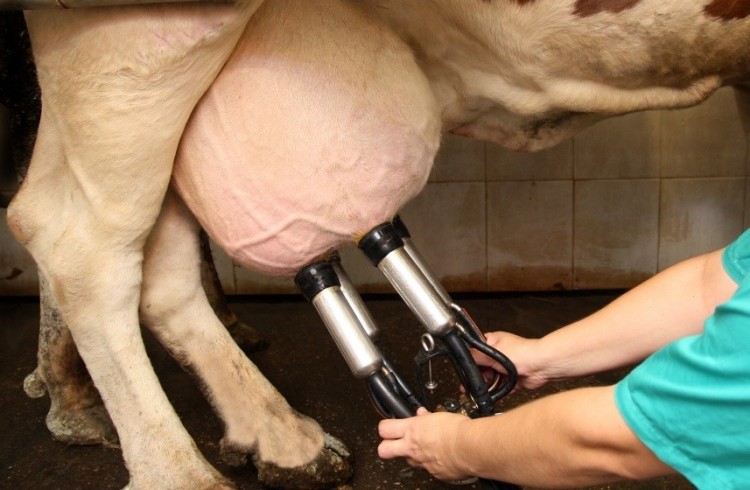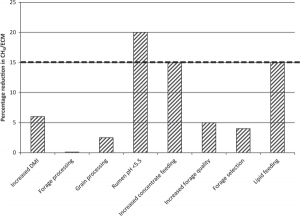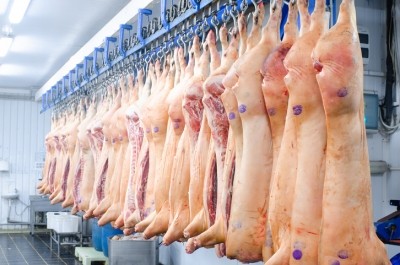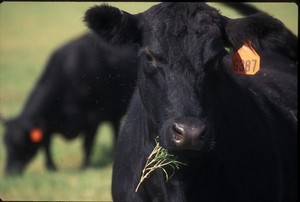Rumen modifiers not as effective as nutrition strategies to cut methane emissions in dairy cows: review

The reviewers, writing in this month’s edition of the Journal of Dairy Science, summarized the literature to determine the most efficient ways of mitigating enteric methane (CH4) emissions in dairy herds, from genetics to farm management to nutrition strategies.
Any approach to enteric methane reduction needs to be cost effective or cost neutral if farmers are expected to adopt the changes, said the reviewers led by Dr Joanne Knapp, an expert in sustainable livestock and poultry agriculture.
Bill Weiss from the Ohio State University, Peter Vadas from the US Department of Agriculture (USDA), Gina Laur from the Gwinn-Sawyer Veterinary Clinic, and Juan Tricarico from the Innovation Centre for US Dairy co-authored the review.
The meta-analysis notes enteric methane comprises 17 and 3.3% of global CH4 and greenhouse gas (GHG) emissions, respectively, and is largely derived from ruminant livestock.
Feed efficiency critical
Ensuring greater feed efficiency is key to enabling feed and nutrition strategies to be beneficial in terms of lowering methane emissions, notes the review.
“Feeding and nutrition have modest (2.5 to 15%) potential to mitigate enteric CH4 in intensive dairy operations in developed countries, with significantly more potential when combined with crop and forage production in developing countries,” said the team.
“Feeding non-structural or starchy carbohydrates, high-quality forages at greater intake levels, or optimally processing the forages can reduce enteric CH4 emissions by 5 to 15%," they add.
Graphic from review showing feeding and nutritional approaches to reducing enteric CH4 emissions per unit of ECM (CH4/ECM) range from 0 to 15%
Rumen modifiers
Feed additives, chemical inhibitors, and biological approaches to altering methanogen populations, activities, and rumen fermentation cannot compromise rumen digestibility and fermentation if they are to be viable CH4-reduction approaches, note the authors.
Feeding approaches and rumen modifiers that shift digestion to the hindgut or to manure in storage will not result in net reductions in CH4 emissions at the farm level, they found.
“To date, rumen modifiers other than nitrates have not shown sustained reductions in CH4,” said the review team.
In vitro, many additives and inhibitors suppress methanogenesis (formation of methane by microbes) by 60 to 100%. “When these additives are fed to animals, however, the reduction in CH4 emissions has been either not evident or transient," said the team.
Feed processing
They said processing forages by grinding, chopping, or pelleting will decrease rumen neutral detergent fiber (NDF) digestibility and can decrease CH4 emissions as a result of increased passage rate with decreased acetate: propionate ratios.
But the reviewers note this effect is not usually evident with restricted intakes, but at high levels of intake CH4 reductions of 20 to 40% per unit of dry matter could be achieved.
Multiple discipline approach
The reviewers say more significant reductions of 15 to 30% CH4 can result through using a combination of genetic and management approaches, including improvements in heat abatement, disease and fertility management, performance-enhancing technologies, and facility design to increase feed efficiency and productivity of individual animals and herds.
They conclude that achieving substantial improvements in dairy cattle productivity and reductions in emissions of CH4 requires “the collaboration of scientists from multiple disciplines, including agronomy and soil science, economics, engineering, genetics, nutrition, reproductive physiology, and veterinary medicine."
The full meta-analysis can be read here.
Source: Journal of Dairy Science Vol. 97, Issue 6, Pages 3231-3261
Title: Invited review: Enteric methane in dairy cattle production: Quantifying the opportunities and impact of reducing emissions
Date: June 2014
Authors: R. Knapp, G.L. Laur, P.A. Vadas, W.P. Weiss, J.M. Tricarico
















